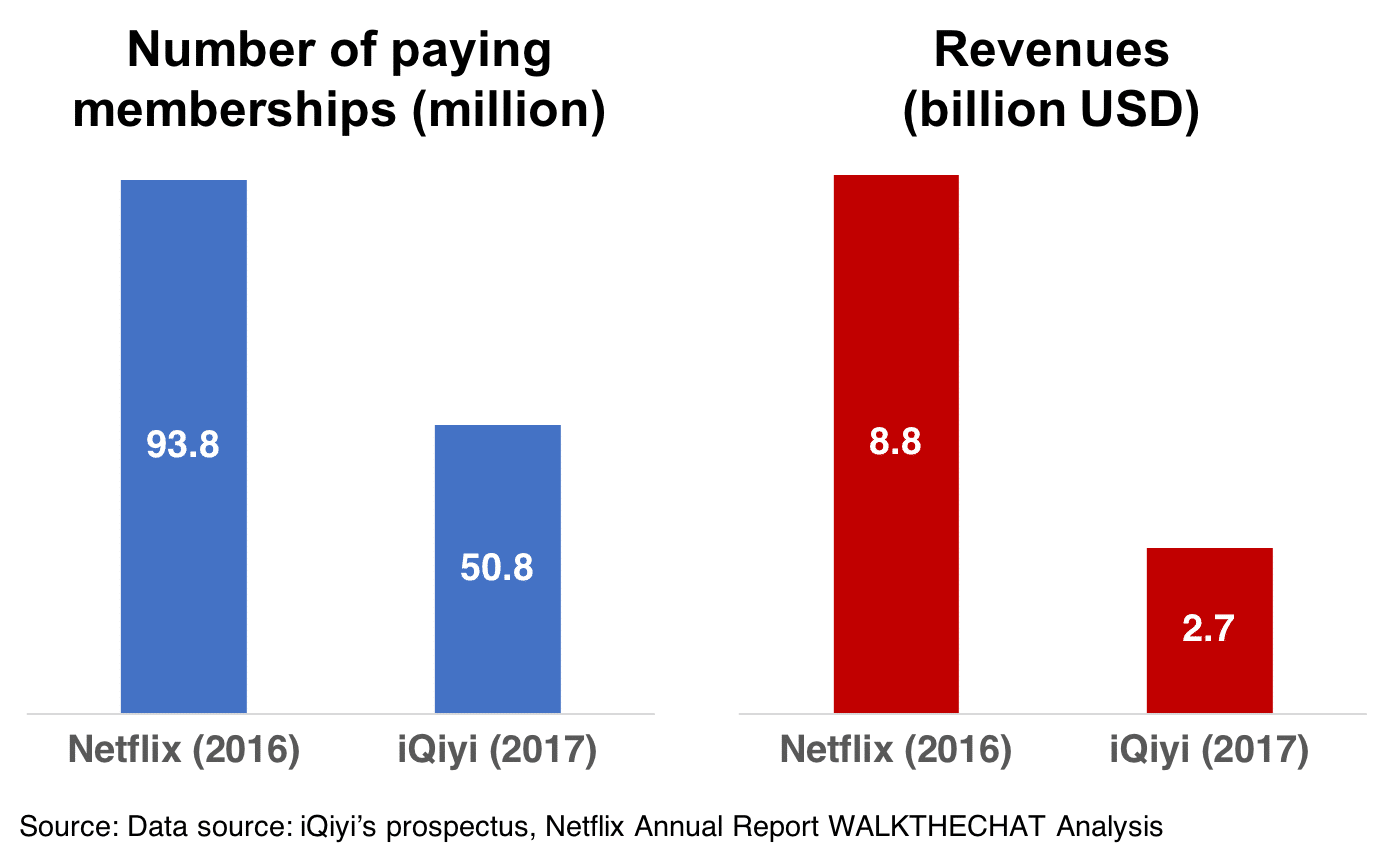iQiyi, a Beijing-based online entertainment company, also known as the “Chinese Netflix”, successfully landed on the Nasdaq Stock Exchange on March 29 pricing its IPO at US$18 under the ticker symbol “IQ.” for a total offering size of more than 2 billion U.S. dollars.
Let’s have a closer look at the largest video streaming company in China.
The booming market of online streaming
iQiyi is, first of all, riding the wave of a growing market. The China online entertainment market is expected to grow at a steady 27% YOY growth rate from 2017 to 2022.
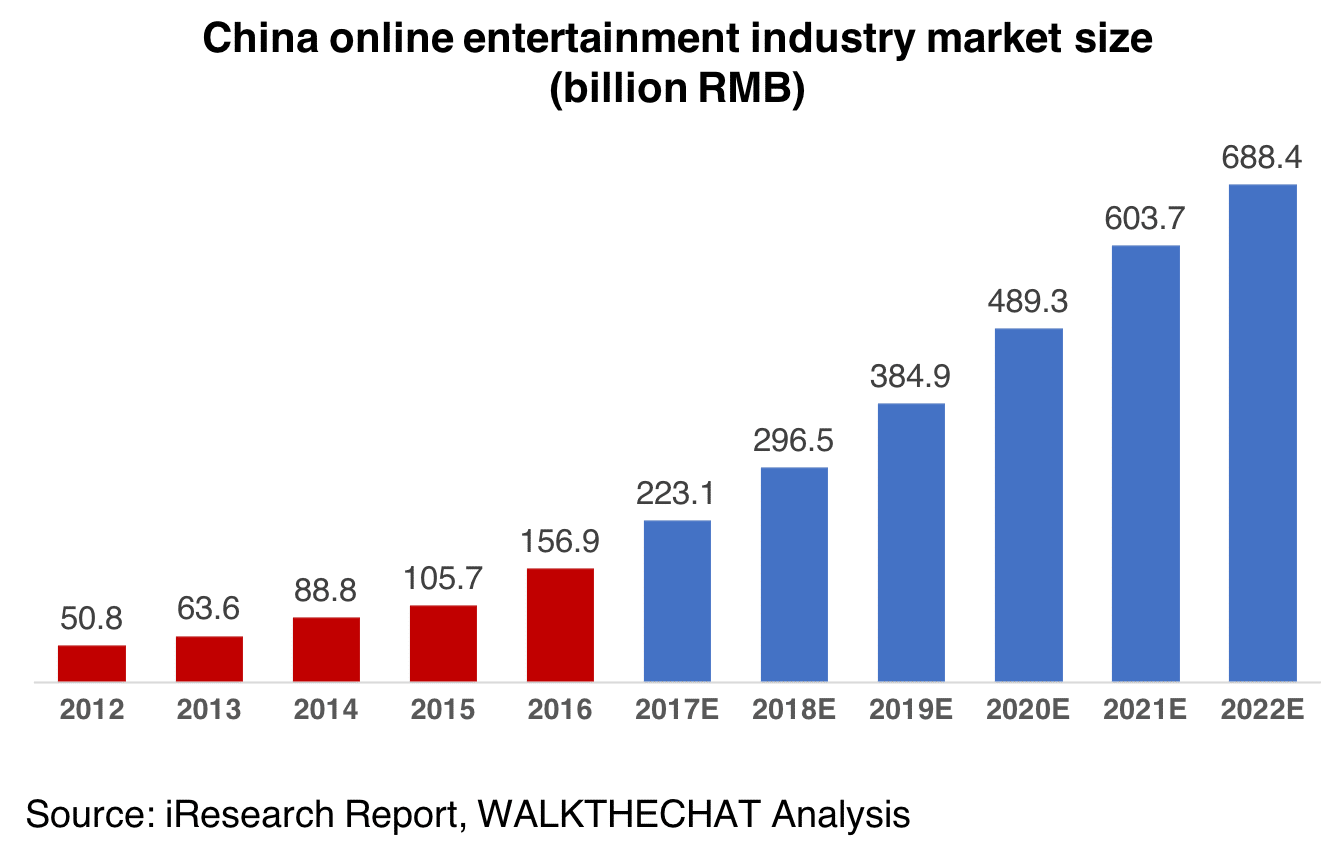
About 10% of this market will consist of Video industry memberships which will grow at a similar pace. According to iResearch, the percentage of video users who pay for content has increased from approximately 1.2% in 2012 to 13.2% in 2016 and is expected to further increase to 40.0% in 2022.
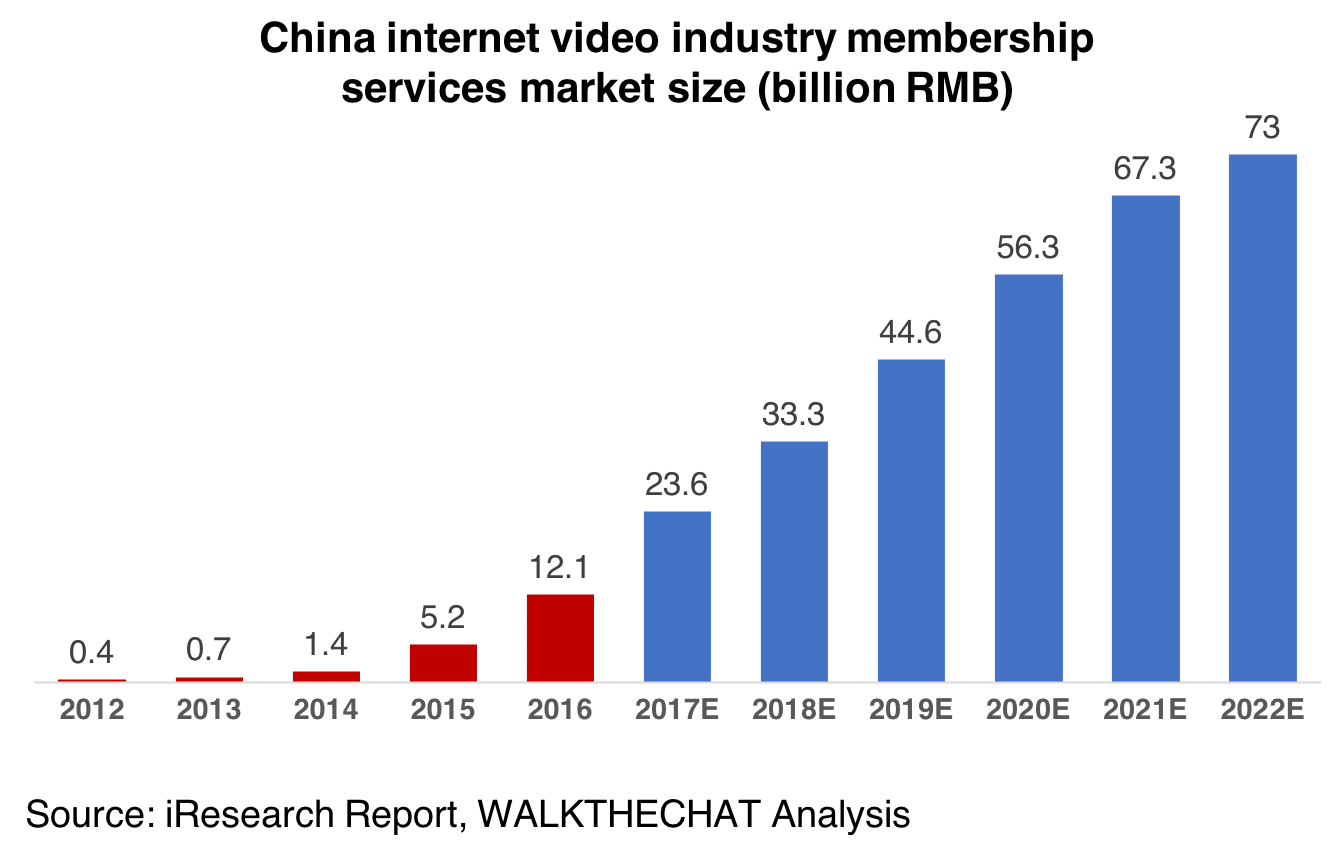
If we compare to the U.S market, there is also a lot of room for growth. The movie box office in North America was US$11.4 billion in 2016, while the domestic membership services revenue from Netflix was approximately US$5.1 billion in the same year (about 45% of the movie box office).
In contrast, the movie box office in China was approximately RMB45.7 billion (US$6.9 billion) in 2016, while the membership services market size of the entire internet video industry in China was approximately RMB12.1 billion (US$1.8 billion – about 26% of the movie box office, indicating a large room for growth).
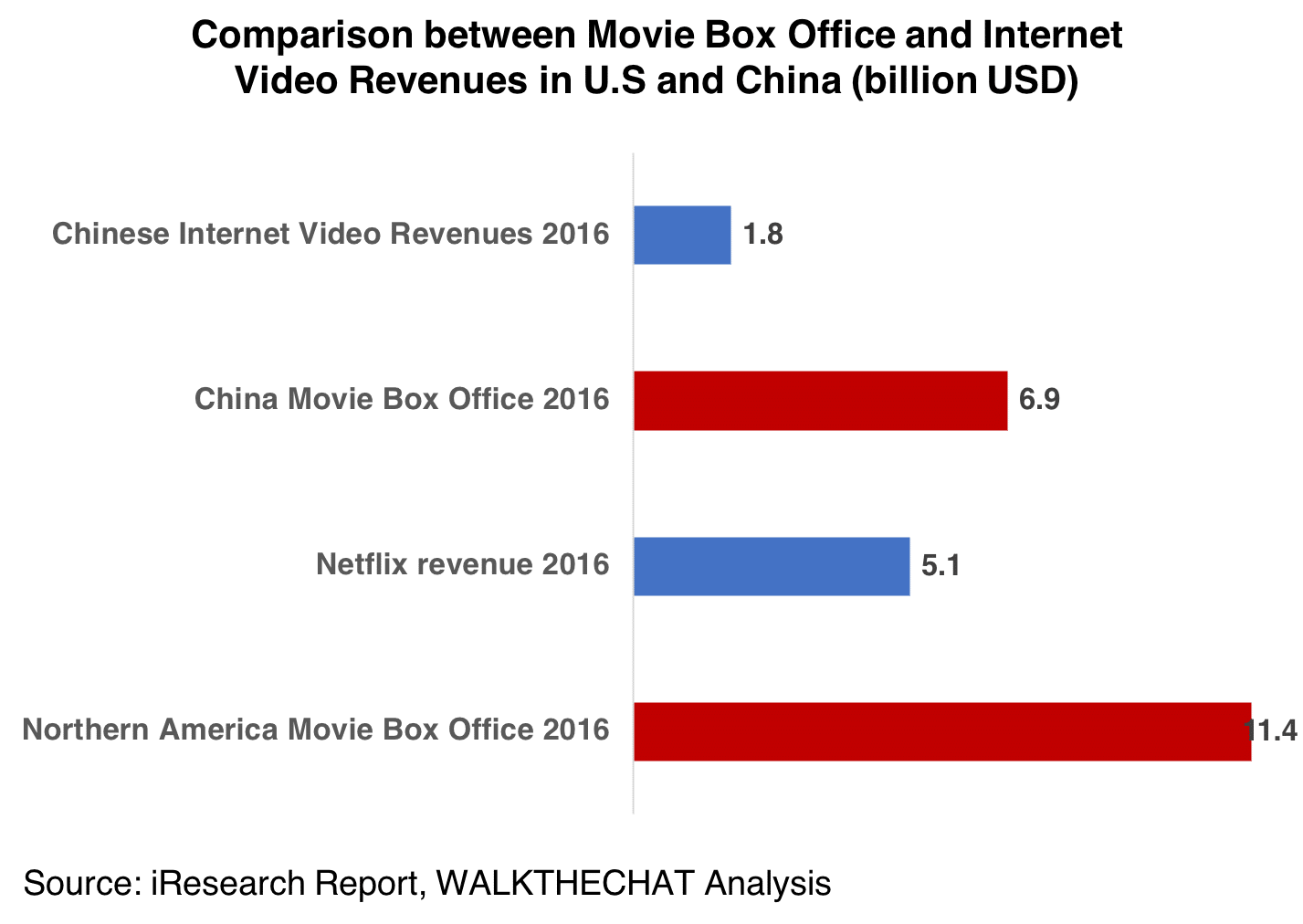
Advertising is another key area for growth. Market size of advertising on internet video platforms as a percentage of total advertising market size in China has increased from 1.4% in 2012 to 5.0% in 2016. It is expected to further double to 9.6% by 2022.
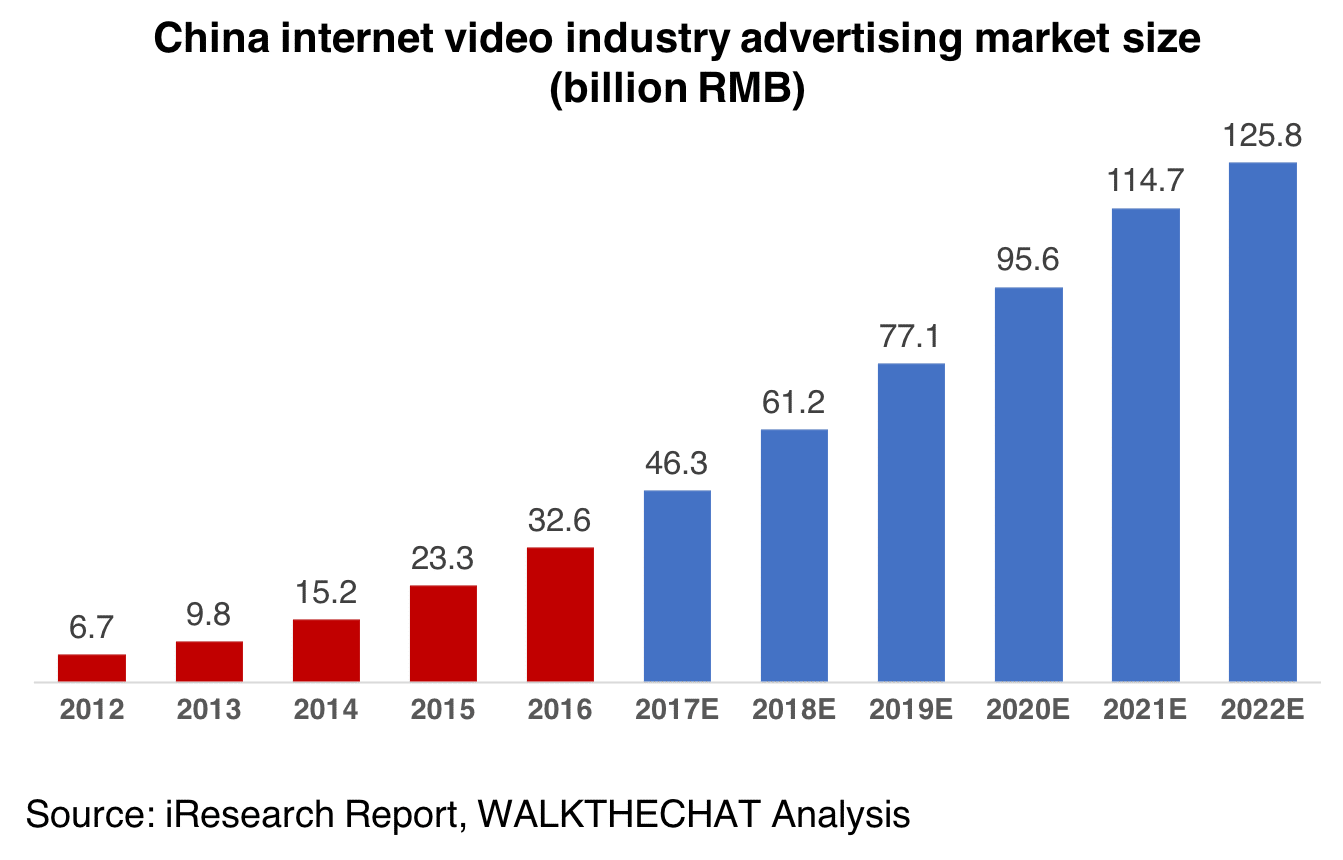
iQiyi’s large and highly engaged users base
The IPO prospectur shows that as of December 31, 2017, iQiyi had around 421.3 million average mobile MAUs (Monthly Active Users) and around 126.0 million average mobile DAU (Daily Active Users).
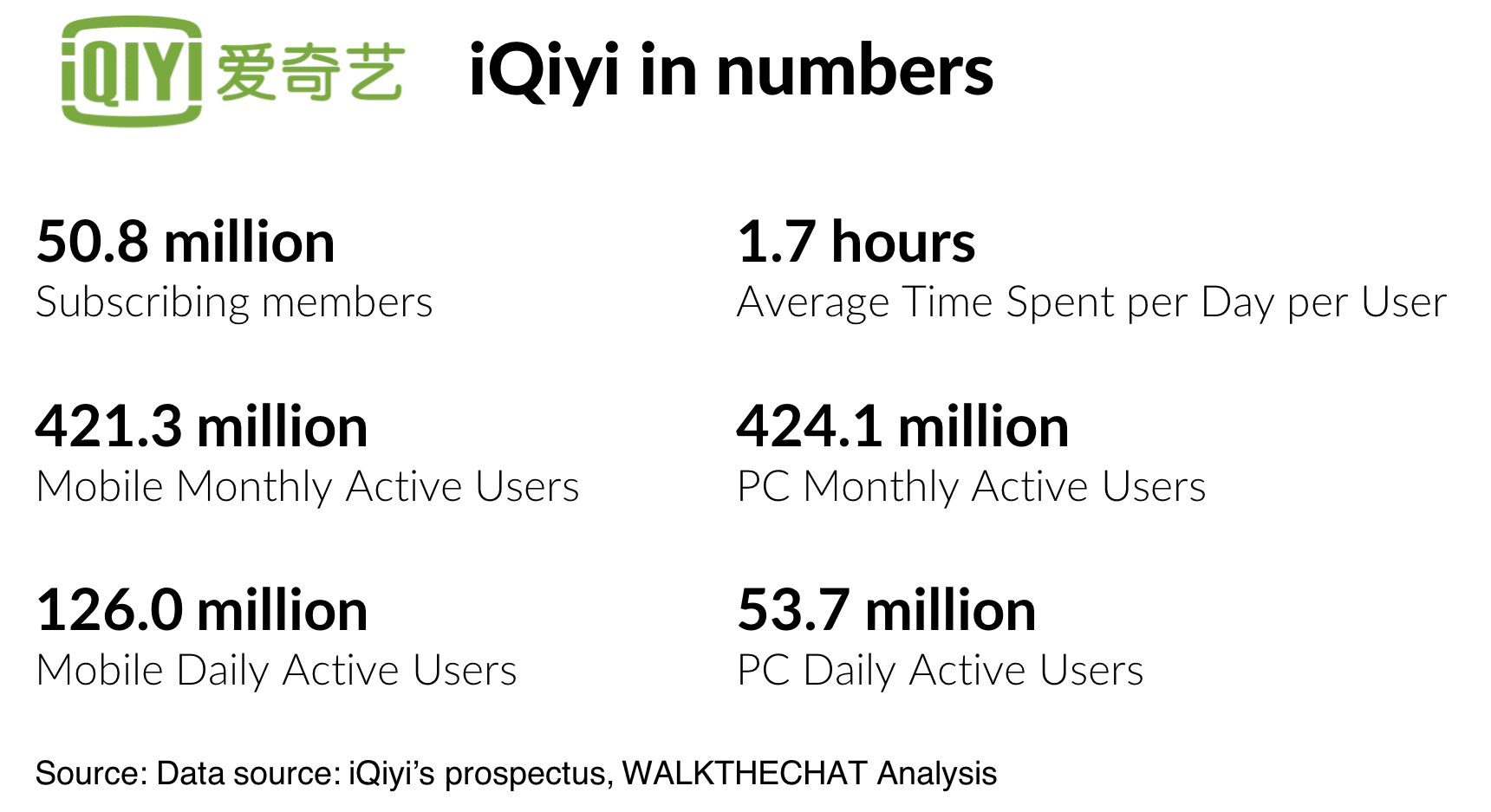
YOY growth was around 3.9% for mobile MAU’s and around 0.48% for mobile DAUs.
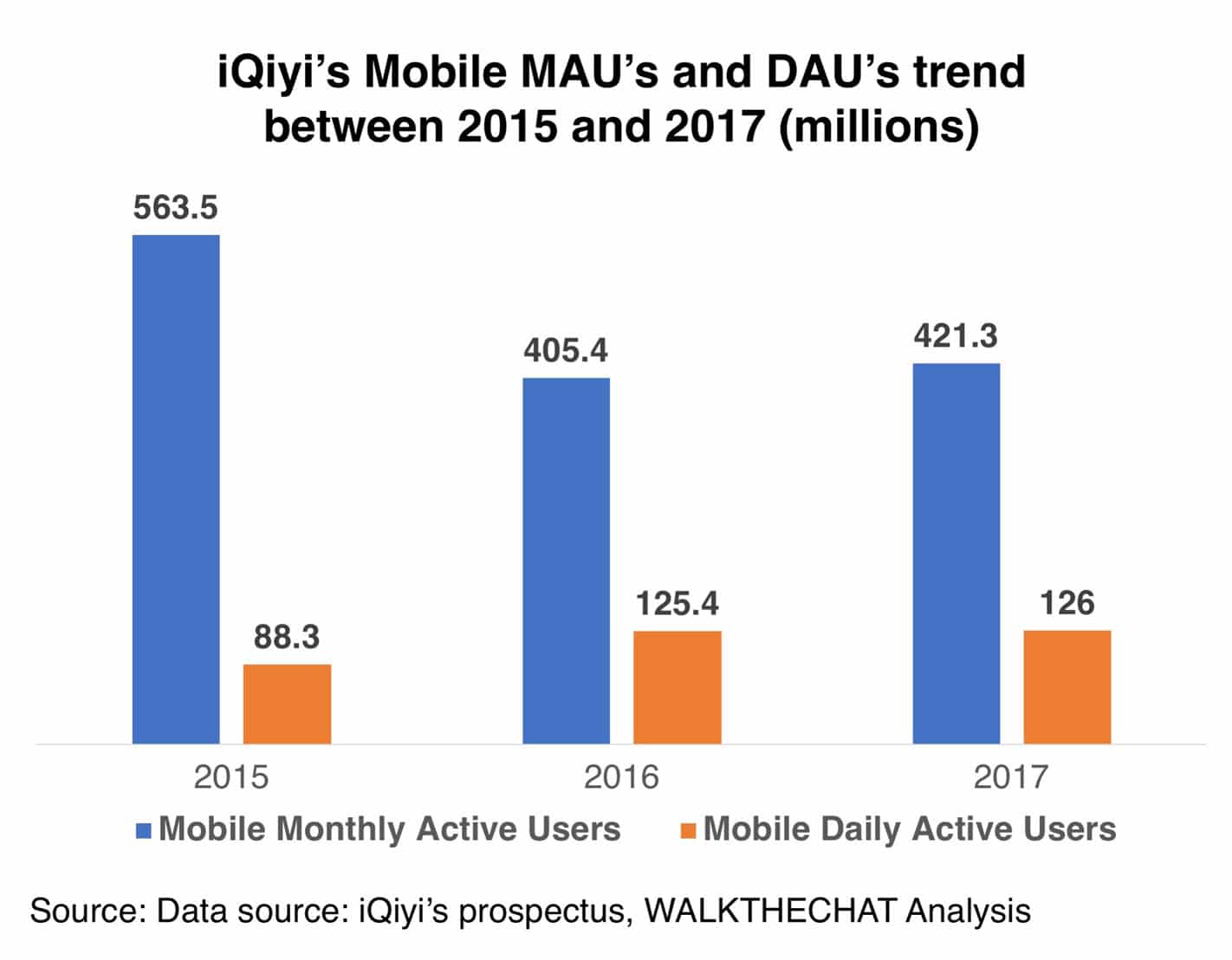
This is not exactly booming growth, but the raw numbers are quite impressive.
As a comparison, Western equivalent Netflix had reached 100 million subscribers in Q2 2017. iQiyi is still a bit behinde its biggest Chinese competitor, Tencent video, which has 137 mobile Daily Active Users by the end of 2017.
iQiyi’s revenues
iQiyi has seen an explosion of its revenue over the last few years, with a 48% YOY growth rate.
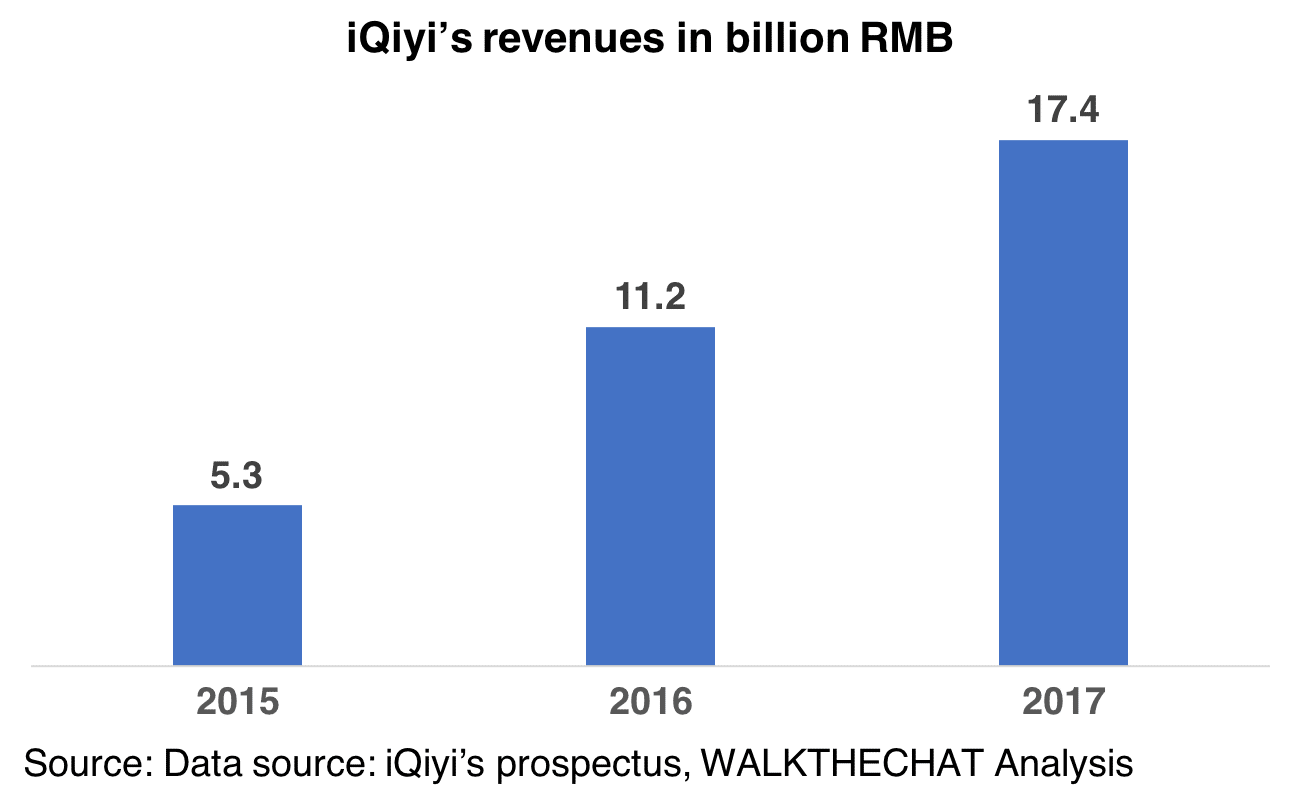
iQiyi also benefits from rather diversified streams of revenues (unlike its Western competitor Netflix which relies mostly on membership fees).
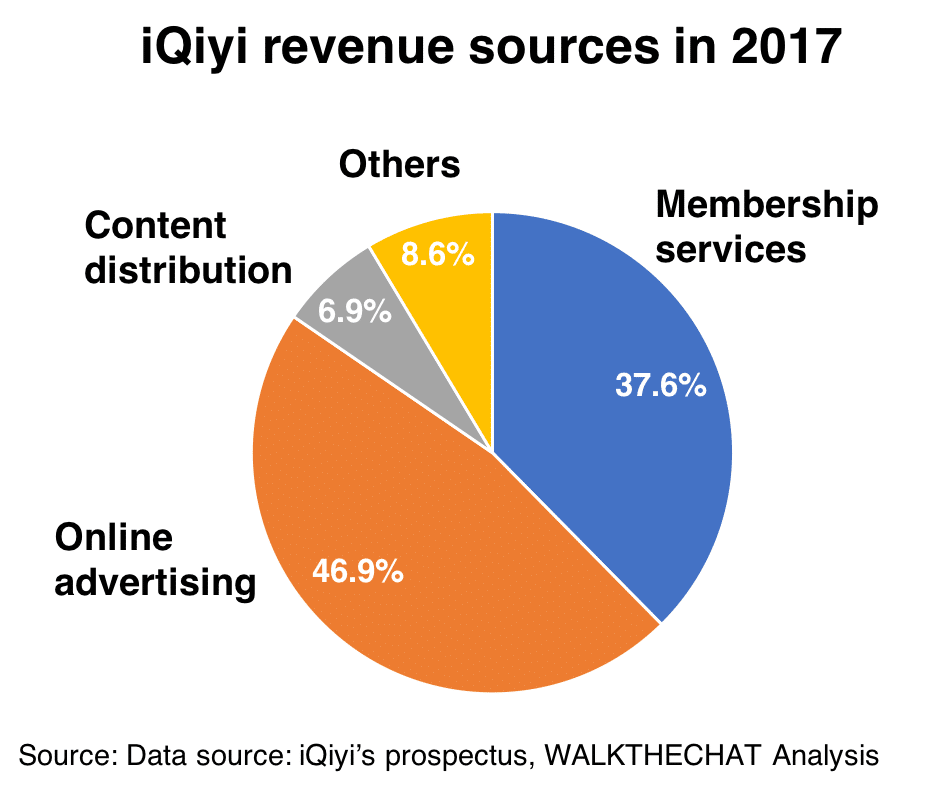
Membership fees have been a growing contributor to iQiyi’s revenue, and are now expected to remain stable around 38% of total revenue.
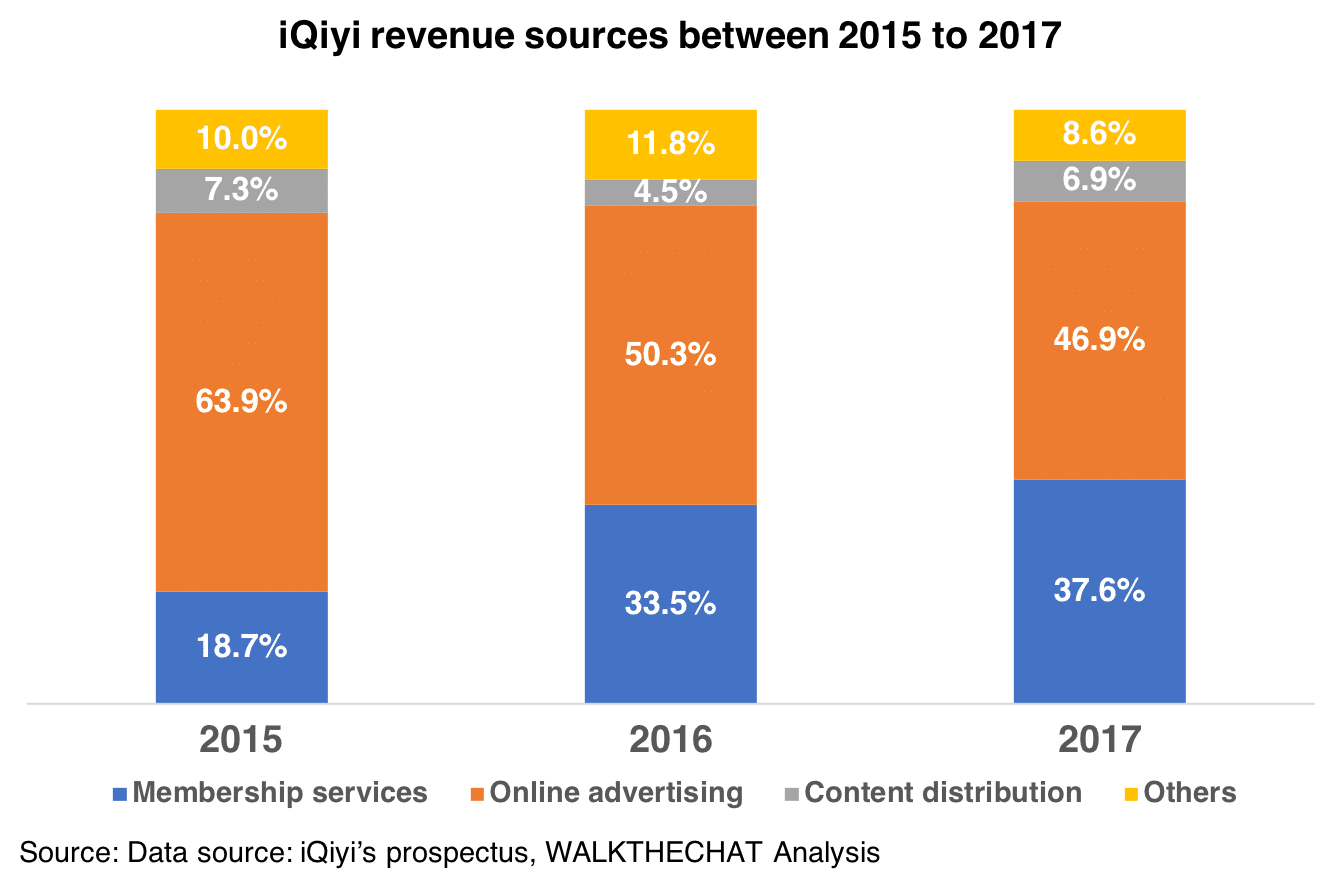
However, despite these additional advertising revenue streams, iQiyi’s revenue per membership remains significantly below the performance of Netflix.
This makes iQiyi’s average revenue per users 53.1 USD, almost half of the 93.8 USD Netflix make from its users. Although it’s already impressive given iQiyi’s membership fee is only around 20 RMB (3 dollars) per month, while Netflixs’s membership is around 10 dollars per month.
Although Tencent video has a slitly more paid subscriber of 56 million by the Q4 2017.
Is iQiyi really the Netflix of China?
Netflix is more than a video streaming platform: it is also a leader in the production of original content.
That’s exactly the strategy chosen by iQiyi. According to the IPO prospectus, iQiyi’s original content accounted for 5 of the top 10 original internet variety shows and 6 of the top 10 original internet drama series in China based on each title’s peak MAU’s (iResearch data).
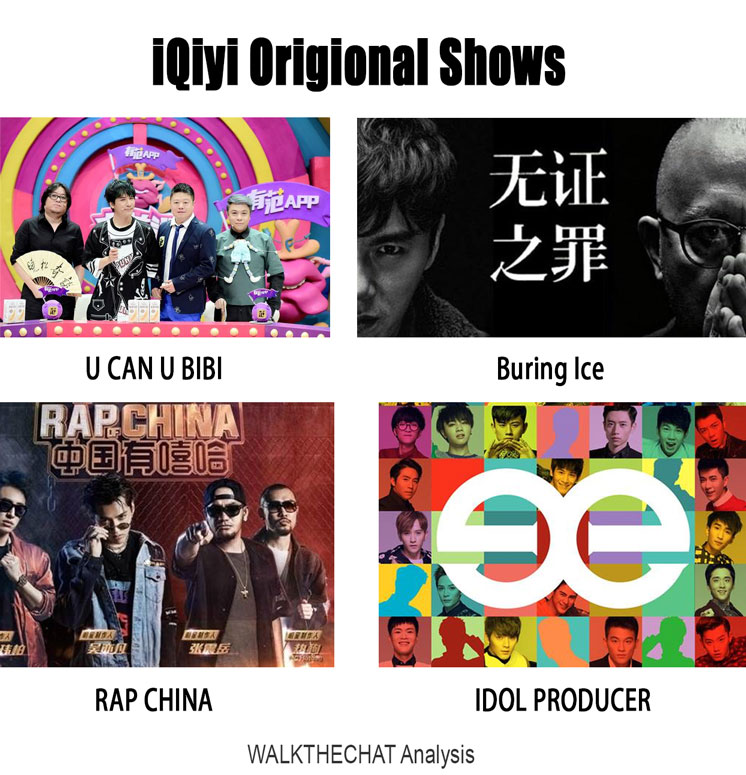
By September 2017, China Rap’s video was played 2.99 billion times on iQiyi; received a high rating of 7.2 on Douban, a Chinese movie review site; and 25 million mentions on Weibo.

“The Lost Tomb” generated more than 100 million video views within the first 24 hours of debut and over 4 billion video views in total.
iQiyi prides itself on leveraging the Artificial Intelligence and Big Data capabilities of its parent company, Baidu, in order to help distribute its original content and other videos more efficiently.
How did iQiyi’s IPO go?
After the market opened, iQiyi’s stock price went up to US$18.2, which was up 1.11% compared to its issue price US$18.
However, just a few minutes later, the price fell below the issue price. By the end of the trading day, its price fell by 13.61% to US$15.55, and market value was, at that time, US$10.95 billion.
“We are not concerned with short-term volatility,” said iQiyi’s CEO Gong Yu said in an interview at the Nasdaq. “Long term, you’ll see how much value the IPO creates.”
And it is true that, given iQiyi’s leading positioning in Chinese video streaming market, the long-term prospects of the company are rather bright.
Conclusion
Despite a quickly falling post-IPO stock price, and a slow user growth, iQiyi shows strong fundamentals and good prospects for the future.
Revenue, memberships and mobile engagement have been increasing exponentially. Rather than endlessly increasing the number of users, iQiyi seems to now be focused on engagement and monetization and therefore profitability. A good sign for the future of the company.


